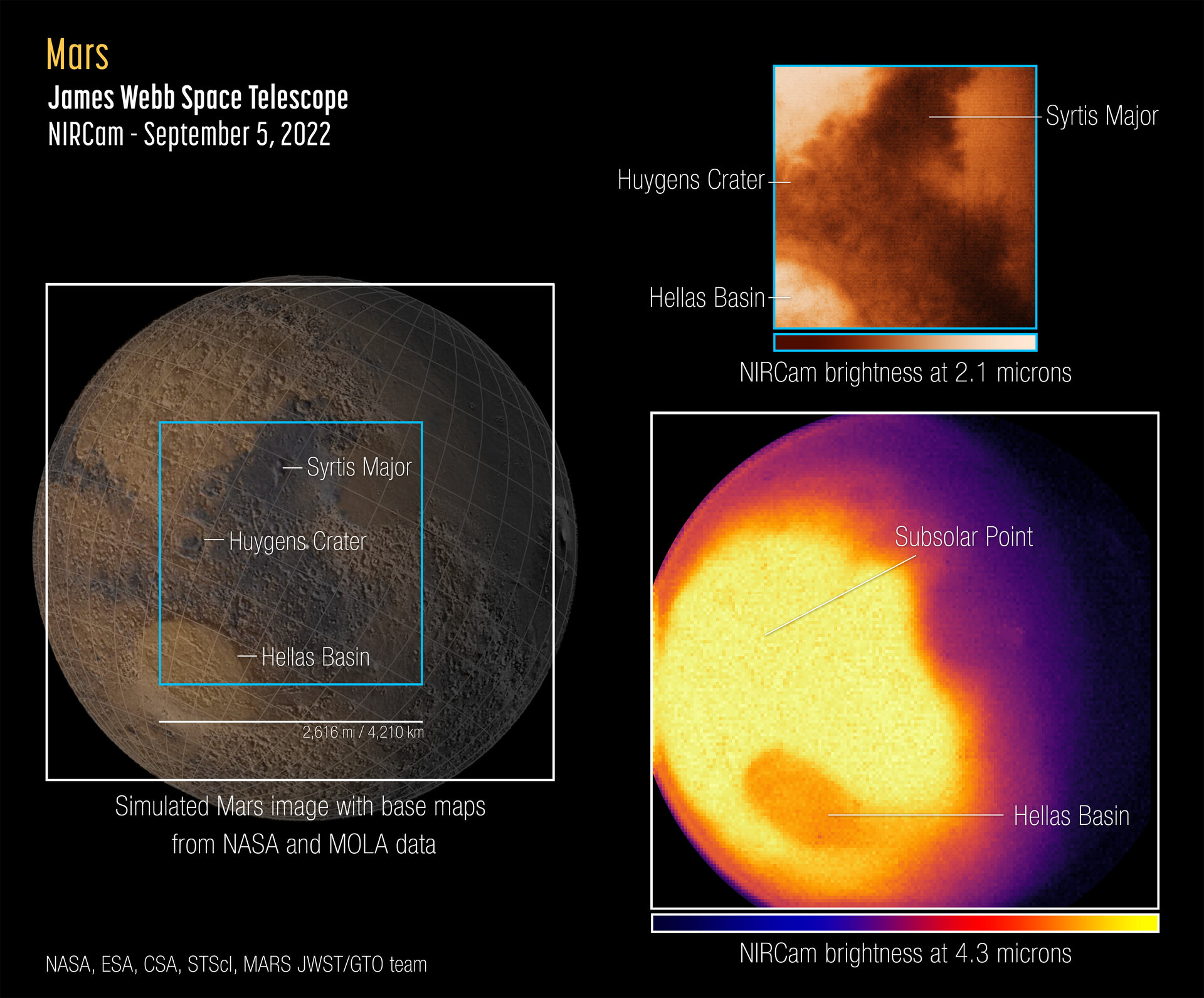
If it feels like we’re getting a lot of “JWST does something for the first time” stories this year… it’s because we are. This week, the newest images are of Mars. Once again, they have tracked JWST to look inside our solar system, just as they did with Jupiter last month.
And what they managed to capture was a portion of Mars’s eastern hemisphere in two different infrared wavelengths. Two images have been released along with a reference map collected by NASA and the Mars Orbiter Laser Altimeter. The smaller, more orange image is dominated by reflected sunlight collected at 2.1 microns and matches up to the visible-light version. The longer wavelength version – collected at 4.3 microns – is a product of the planet’s thermal emission or heat. That image shows which regions of the red planet were receiving the most sunlight at the time of the observation. You can see the images in our show notes at DailySpace.org.
In addition to the infrared images, JWST also collected a near-infrared spectrum of Mars. While that spectrum is still being analyzed, the initial release shows the presence of carbon dioxide, carbon monoxide, and water vapor. Further data is expected to be collected in the future that will allow for a detailed analysis of Mars’s atmosphere including regional differences and trace molecules like methane and hydrogen chloride.
We here at the Daily Space are particularly interested to see these global views on methane.
These images and the spectrum have not been put through the peer review process, yet, but we’ll bring updates once the relevant papers make it to press.
More Information
ESA press release
Webb press release




 Join the Crew!
Join the Crew!
 Escape Velocity Space News
Escape Velocity Space News
0 Comments